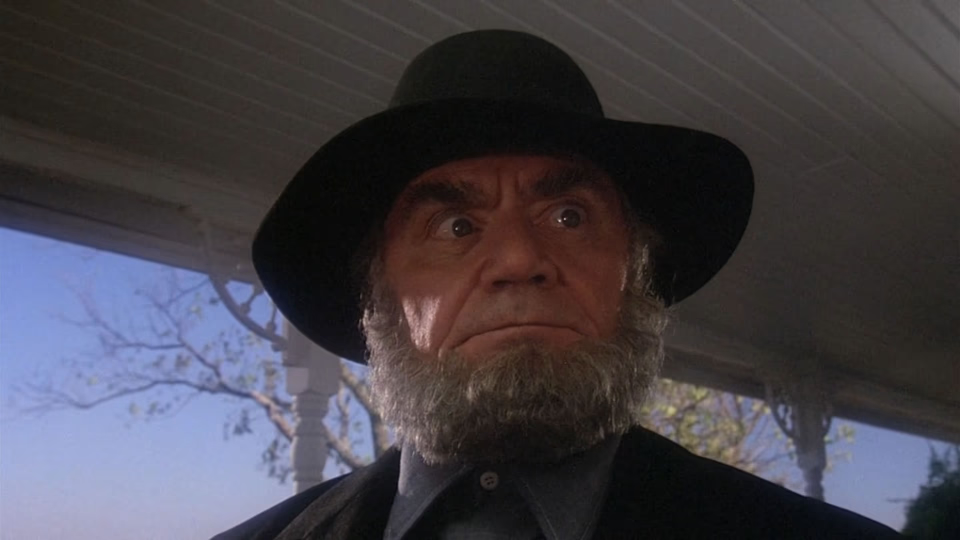Deadly Blessing

After directing gritty indie-horrors The Last House on the Left and The Hills Have Eyes, Wes Craven landed a job directing a TV movie called Summer of Fear. The result proved popular enough to secure a theatrical run in Europe and led to this entry, his first studio theatrical production. A rural giallo starring Ernest Borgnine and featuring an early performance from Sharon Stone. Fair warning, spoilers follow.
Set in rural California, the story opens with an unseen killer staging a fatal tractor accident. The victim is a former Hittite who had married outside his faith, earning his father’s condemnation. That father is played by Ernest Borgnine, who leads the neighboring Hittite clan—an ultra-fundamentalist religious sect who, “make the Amish look like swingers.”
In the aftermath, the young widow invites her college friends to stay, one of whom is Sharon Stone in her first major role. Adding to the tension, the Hittites harass the widow’s other neighbors, a single mother and her daughter, accusing the daughter of being an Incubus demon. Astute viewers will have already spotted the film’s twist.
PolyGram studio execs Peter Gruber and Jon Peters mandated Stone’s casting. While her later work in films like Basic Instinct and Casino demonstrates presence and range, she looks lost here, unsure of her motivation or purpose. She needed a director to coach her, but according to screenwriter Glenn M. Benest, Craven was a master technician on-set but didn’t work much with the performers, preferring to cast to type.1 Thus Stone, a prior model with little acting experience, struggled. She employed an acting coach on-set, who Craven sometimes clashed with, further complicating matters.2 Craven’s resulting inability to coax a better performance or cut around Stone’s failings cripples the film.
As the story unfolds, a black-gloved killer offs more victims. The film plays these scenes for suspense instead of gore to mixed results. An extended sequence in a barn with Stone struggles to maintain tension. A scene involving an exhumed corpse and chickens conveys a wry sense of humor. The best—a sequence involving a bathtub and a snake—Craven would recycle in Nightmare on Elm Street.
Throughout, the film struggles with tone. The rural setting and mysterious Hittites scream folk horror, while James Horner’s choral score evokes satanic scares like The Omen. Tying into both is a spider motif as illustrated by the aforementioned barn sequence and a nightmare scene that sees a spider descend into a woman’s mouth. All these elements prove red herrings when the film reveals itself as a Dressed to Kill imitator.
Not content to ape one De Palma picture, the film also includes a Carrie-like coda that proves laugh-out-loud inane. According to Craven, it was another mandate from Gruber and Peters, and shot after the film was in post-production.3
Though he did some early polishes on the script, Craven regards the film as a work-for-hire project.4 Towards the end of shooting, he’d spend his weekends location scouting for his next project, Swamp Thing, framing Deadly Blessing as a stepping-stone project toward a projected career as a big-studio director.5 But Craven’s lack of investment and control expose his weaknesses, which make him better suited for smaller, independent pictures he can author and cast himself. When both Deadly Blessing and Swamp Thing under-performed, Craven would find himself out-of-work for nearly a year.
Thus, while Deadly Blessing may hold some curiosity value for Craven fans, amongst his oeuvre, it’s best forgotten.